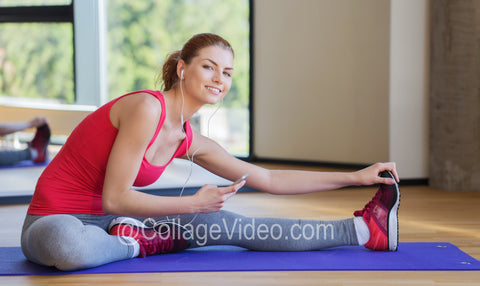Running vs. Walking for Weight Loss
by Jari Love
The whole question of what kind of exercise is best for weight loss or weight control is a tangled and complicated one. Does the exercise burn mostly fat or carbs? Does it stimulate “afterburn” after the workout is done? Does it leave you feeling extra-hungry so that you overcompensate by eating too much? All these factors are very hard to control in the lab over long periods of time, so there’s something to be said for “free-living” experiments, where you simply observe a very large number of people over many years and try to figure out which behaviors led to which outcomes. (This approach has problems too, of course, like distinguishing cause from correlation — no single approach is perfect.)
Anyway, that’s a long-winded intro to a new study from Paul Williams at Berkeley National Lab. He’s the man behind the National Runners’ Health Study, which has been following more than 120,000 runners going back to 1991. His latest study, just published online in Medicine & Science in Sports & Exercise, compares a cohort of 32,000 runners from that study with 15,000 walkers from the related National Walkers’ Health Study, with an average follow-up time of just over six years. The goal: look at how much the subjects increased or decreased the amount of walking or running they did during that time, and see how it affected their weight.
Running v Walking
Of course, you can’t directly compare running and walking through time spent or even distance covered, because they’re at different intensities. Walking is typically classified as “moderate” exercise, at 3-6 METs (1 MET is the amount of energy you burn while lying around on the sofa); running is typically classified as “vigorous,” at more than 6 METs. In theory, though, you’d expect that if you compare a similar change in METs burned, the weight loss should be similar regardless of whether you’re walking or running.
That’s not what Williams found. An increase or decrease in METs burned through running produced a significantly greater loss or gain, respectively, of weight compared to the same increase or decrease in walking METs. In particular, for the heaviest 25% of subjects in the study, calories burned through running led to 90% more weight loss than calories burned through walking.
Why is this? This study can’t answer that question, but Williams suggests a few possibilities — it’s well established that vigorous exercise stimulates more “afterburn” than moderate exercise, for example. He also notes studies that have found that post-exercise appetite suppression is greater after vigorous exercise, though my impression is that some other studies have found precisely the opposite. The data certainly isn’t perfect, and I wouldn’t take this study as the “last word” on weight loss and exercise intensity. That being said, I have to admit that it makes sense to me!
Via runnersworld.com
Jari Love – original creator of Get RIPPED! DVD series and group exercise classes. The hot-selling and critically acclaimed Get RIPPED! series enables individuals of any fitness level to burn up to three times more calories than the traditional weight-training program, and has received rave reviews from fitness critics throughout North America since the first title debuted in late 2005.










